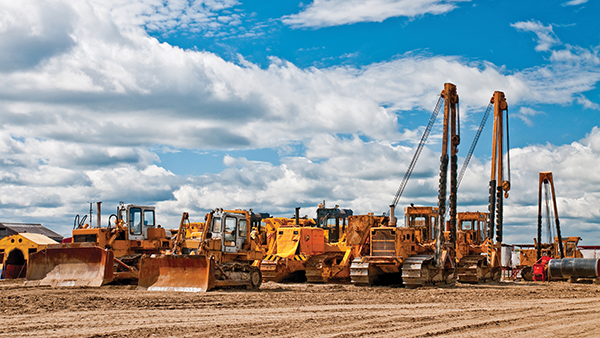We’ve all had that moment: You rent the same piece of equipment again and again, and you start to think to yourself, “We should just buy one.”
It may sound like a good idea, but there is a dark side to equipment ownership that you should understand before you take the plunge. There are three hidden factors in the equipment ownership equation that might break your budget if you’re not aware before you make this investment. On the other hand, if they line up correctly, owning instead of renting could make a huge, positive difference.
How will you know? Read this article. We’ll break down exactly what you need to know about buying equipment versus renting it and how to make the decision that is best for you and your real estate business.
Hidden Factor #1: Unforeseen Costs
You can’t just compare how much you spend on renting to the retail cost of a machine and know if the purchase is worth it. Once you own a piece of equipment, you also have to maintain it. That can get expensive. Here are a few costs you might not have factored in:
- Pay for staff or independent mechanics when machinery breaks (and it will break)
- Tools and equipment necessary for maintaining the machinery in good working order
- Time lost while you wait for the independent mechanic to fit you into their schedule
Real-life example: Aerial Work Platforms (AWPs)
These platforms are not just expensive to purchase and maintain; most contractors need more than one in order to get jobs done efficiently. As a result, most customers do the math, then choose to rent, not buy.
Hidden Factor #2: The Aging Equation
Construction equipment is like a car: The older it gets, the less value it retains.
If it’s not succumbing to the wear and tear of everyday use, it’s stuck in a storage facility, decaying and rusting from inactivity. We see this quite frequently with machines used for emergency situations. You want it for when disaster strikes, but every other day of the year, it sits idle, one of the worst things for construction equipment.
Hidden Factor #3: Storage and Transportation
If you own your own equipment, get ready to invest in more storage space and at least one heavy hauler. If you do not already have the space to store your new equipment and the vehicle on which to haul it safely to jobs, those purchases must be part of the rent-versus-buy equation.
How to Do the Math
It may seem as though you are constantly coming out of pocket to rent a certain item, but perception and reality can be two vastly different things. If you’re considering purchasing a machine outright, you need a firm understanding of just how much you’re going to use it.
So, we recommend a little math.
Divide the number of days you expect to use the machine each month by 22 (the approximate number of working days in a given month). The result is the rate at which you can expect to use a given product.
If you expect to use a piece of equipment 10 days per month, you divide 10 by 22, which is .45 or 45 percent. Industry experts suggest that you should only purchase equipment you intend to use 60 percent of the time or more.
Sunbelt Rentals will provide an honest assessment on buying versus renting a piece of equipment and is a Think Realty Supplier.
Think Realty Members receive access to special discounts on daily, weekly, and monthly rental rates from Sunbelt Rentals. Visit thinkrealty.com/SunbeltRentals to sign up (for free!) and get started today.























0 Comments